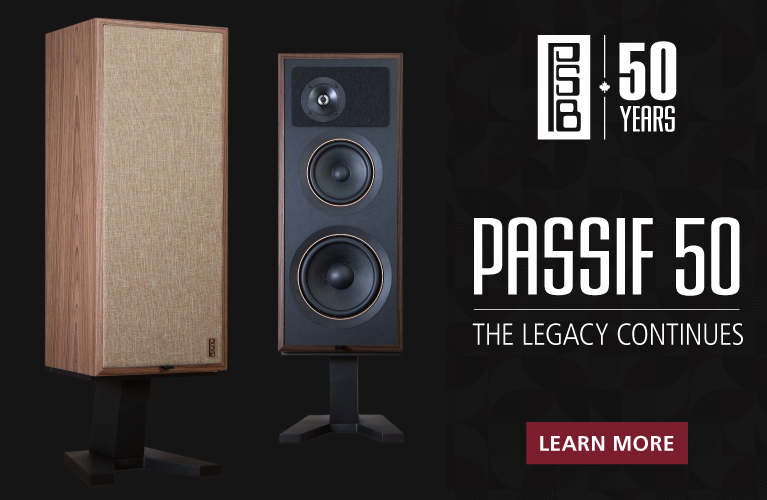 Canadian manufacturer Saturn Audio was founded in Cambridge, Ontario, in 2017, so it’s a relative newcomer to the hi-fi scene. The 401, which Jason Thorpe reviewed last month, is the only phono preamplifier the company makes. Despite its mere half-decade existence, the company boasts “100 years of professional experience.” This includes the circuit-designing talents of Gilbert Yeung, who founded Blue Circle Audio in the 1990s, and the manufacturing experience of Saturn Audio’s president, René Evans.
Canadian manufacturer Saturn Audio was founded in Cambridge, Ontario, in 2017, so it’s a relative newcomer to the hi-fi scene. The 401, which Jason Thorpe reviewed last month, is the only phono preamplifier the company makes. Despite its mere half-decade existence, the company boasts “100 years of professional experience.” This includes the circuit-designing talents of Gilbert Yeung, who founded Blue Circle Audio in the 1990s, and the manufacturing experience of Saturn Audio’s president, René Evans.
Priced at $2900 (all prices in USD), the 401 consists of the main case, housing the audio circuitry, and a separate power supply, connected by a supplied umbilical cord. Jason noted in his review that there is “sufficient flexibility within the Saturn 401 to accommodate pretty much any cartridge.” The phono stage supports both moving-magnet (MM) and moving-coil (MC) types. Setting changes are made by removing the lid of the main case and repositioning jumpers on a circuit board.
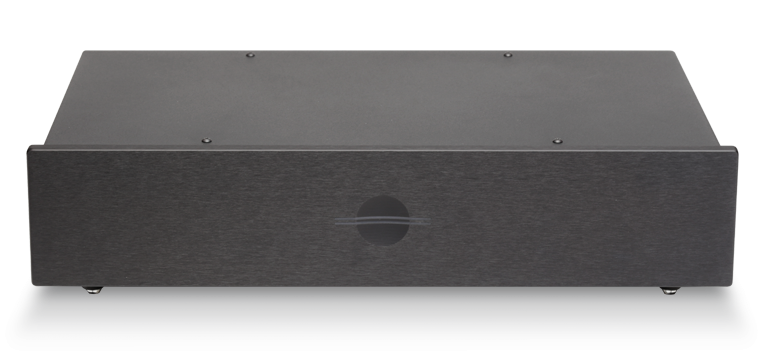
In his review, Jason wrote that there are “100-, 220-, 470-, and 1000-ohm settings for moving-coil impedance,” while “the moving-magnet input presents a standard 47k-ohm value.” He also noted that the gain for MM cartridges is fixed at 42dB, but can be configured at 61, 67, 75, 81, or 87dB for MC designs, and that there are “jumpers for a rumble filter and another set for moving-magnet capacitance.” The backside of the 401’s main case has both single-ended (RCA) and balanced (XLR) outputs, though Jason pointed out that “the 401 isn’t a fully balanced circuit.”
Jason tried the 401 with a Clearaudio Performer V2 Ebony MM cartridge, which was mounted to a Clearaudio Concept turntable, but he mainly used the 401 with three MC cartridges—the EAT Jo N°8, Sumiko Celebration 40, and Shelter 901—with his VPI Prime Signature turntable. Jason’s listening impressions focused on the EAT and Sumiko cartridges, but he found that all three MC designs worked well: “The 67dB setting provided more than adequate gain.”
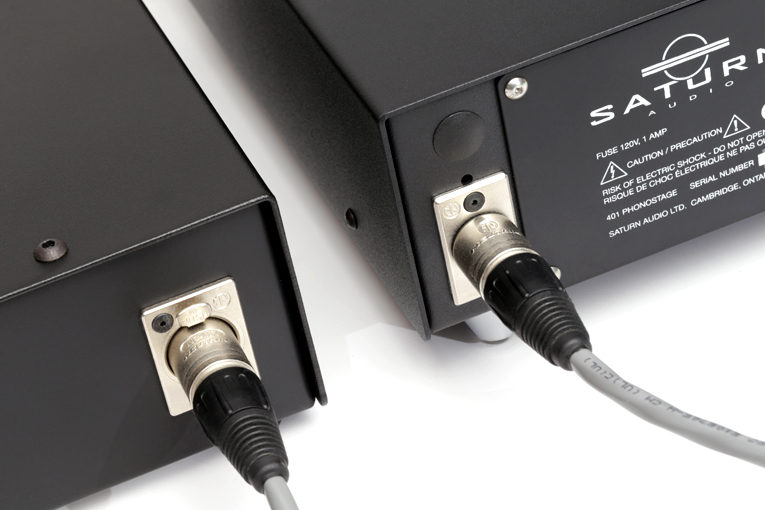
Jason first determined the 401’s quietness by connecting it into his system and then turning the “preamp volume up and up” with no music playing. He wrote that he “had to turn the preamp up significantly higher” than he ever does “when listening to music” before any hiss emerged. And when he did hear something, it was “a fairly inoffensive, pale hiss.” So Jason penned: “I hereby declare that the Saturn 401 is a quiet phono stage.”
Beginning his listening with the EAT Jo N°8 cartridge, Jason stated: “The Saturn 401 delivers music with a light touch, revealing much of the space around the notes, which counters the EAT’s richness. I wouldn’t call the Saturn 401 airy, so much as delicate.” When he played Massive Attack’s “Better Things,” from the band’s Protection (Wild Bunch 7243 8 39883 1 0), he wrote that he heard “a huge dollop of bloom around Tracey Thorne’s voice.” Jason was impressed by the way the phono preamp presented his pressing of one of his favorite albums: “Thorne’s huge, evocative voice is redolent with sibilance, and the Saturn dredged up a halo of information and layers of detail and inner light around a solid central image.” But he also emphasized that the 401 was not “accentuating sibilance”; instead, he felt its “portrayal of the upper registers was correct in both level and tonal balance,” so it was simply revealing what was in the recording.
Jason then played “’Cause Cheap Is How I Feel,” from the latest reissue of the Cowboy Junkies’ The Caution Horses (Sony/RCA 07863520581). He described how he could hear “the texture, the miles-deep emotion of Margo Timmins’s voice,” and “that information-in-the-sibilance thing going on” he had noted on the Massive Attack track. Jason felt the Saturn 401 clearly revealed “there was so much more musical meaning in the new reissue.”
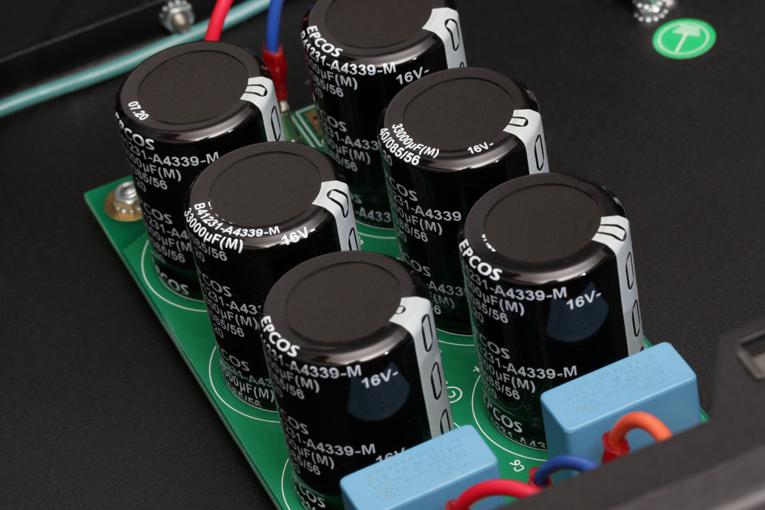
He then installed the Sumiko Celebration 40 to listen to another Cowboy Junkies recording: a recently remastered version of the band’s Pale Sun, Crescent Moon (Sony/RCA 19075864791). Jason wrote: “It was here, listening to the Sumiko, that I got to the heart of the Saturn 401. This combo, the Sumiko with the Saturn 401, opened up a huge volume of air between my speakers. . . . It revealed just how incredibly spacious sounding the Saturn is.”
With the Thelonious Monk Quartet’s Monk’s Dream (MOVLP842), Jason noted: “This fairly modest phono stage further expanded the size of the images, along with floating a huge amount of air around each instrument.” He went on to describe the sound of the drums:
In the midst of the huge sound of Monk plonking away on “Bright Mississippi,” I could feel—heck, I could nearly see—Frankie Dunlop’s crisp snare. The drums are hard left on this recording, but even so, I could totally see the positioning of the snare, delineated from the hi-hat and kick drum. Note that just now I said I could see the positioning of the drum components. I didn’t say hear because this is imaging so tight and crisp it blurs the senses.
But Jason confessed that he felt “a touch conflicted” about the 401’s “bottom end,” explaining that he “waffled between feeling utterly enraptured by the Saturn 401’s presentation of bass and occasionally thinking it was maybe just a touch lean.” Using Harkness’s The Occasion (Wildchild Records WCR001LP) as an example, Jason described what he heard and how he took action:
Down low, almost hidden in the mix of the title track, is some of Harkness’s lithe, quick, rhythmic bass work. With the Saturn 401 running the show, I had to listen a touch more carefully, as the actual level seemed just a tiny bit lower than I’m used to. That said, once I caught the aural focus, I found it exceptionally easy to follow along. In the end, I moved my speakers back a couple of inches, which boosted the bass just a touch without interfering with other aspects of the frequency range. And with this slight adjustment, I got all the weight I needed, along with a suppleness and rhythmic flow that I quickly came to value and never wanted to let go.
Despite his comments about the bass, it was obvious from what Jason wrote in his review that he thought the 401 to be an outstanding phono preamplifier. This was reinforced toward the end of the review where he compared the 401 with his recollections of the Constellation Andromeda phono stage, which he described as “the One Phono Stage to Rule Them All.” However, Jason confessed that he “was never entirely comfortable with the Constellation” because of its high price—$19,900 when Jason reviewed it for SoundStage! Ultra in June 2019, but costing $25,000 today.
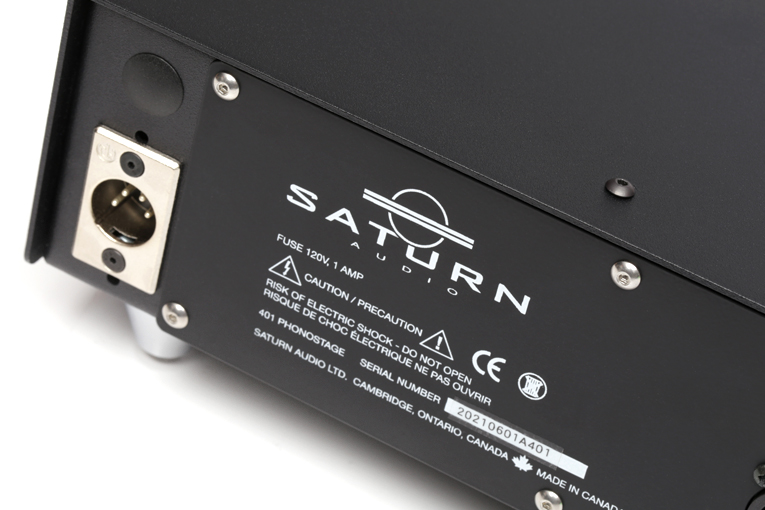
Jason didn’t feel the two phono stages sounded exactly the same: “The Constellation shot out a denser, chunkier soundstage and had more weight on the bottom, but the Saturn 401 counters with a greater sense of bloom and larger, more three-dimensional images.” The point Jason wanted to make by bringing up the Andromeda was how much he “enjoyed each phono stage’s overall sound” and that, for him, the 401 “filled the void left by the Constellation’s departure.” For this reason, Jason called the 401 a “bargain.” The Saturn Audio 401 earned a Reviewers’ Choice award at the time the review was published—and has been recognized with a Recommended Reference Component award this month.
Manufacturer contact information:
Saturn Audio Ltd.
PO Box 23054
Cambridge, Ontario N1S 1W4
Canada
Phone: (519) 623-1212
Website: www.saturnaudio.com






















